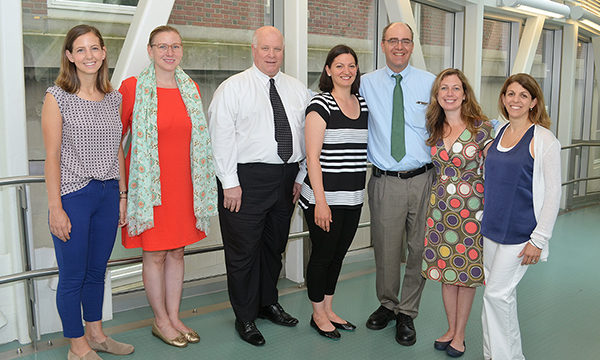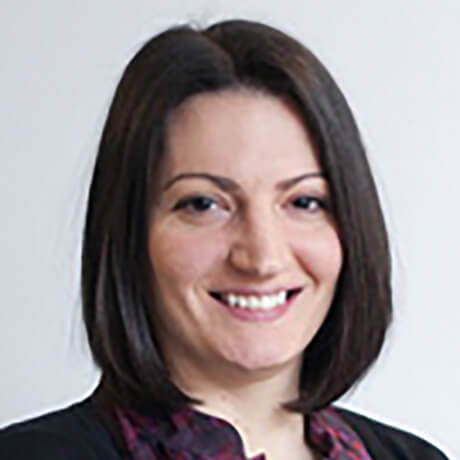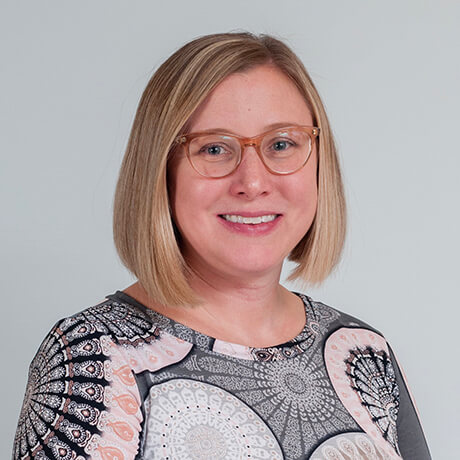Pediatric Aerodigestive Center


Contact Information
Pediatric Aerodigestive Center
Massachusetts Eye and Ear
243 Charles Street
Boston,
MA
02114
Phone: 617-573-3074
If you have questions, please email Dr. Christopher Hartnick or Elissa Nieves and we will be glad to help you.
For info regarding consultations coming from BWH and how to enter these requests in Epic, please click here to see instructions (PDF).
Explore This Treatment Program
Schedule a Virtual Visit
Our team provides patients with virtual visits using video-based programs over a secure Internet connection to the patient’s desktop computer, laptop or tablet. Virtual visits give our patients and families a direct video link with their doctor without having to travel for an appointment. Patients may discuss symptoms and clarify treatment plans from the comfort of their home or another private setting. To arrange a virtual visit, please call 617-573-3074 or email Elissa Nieves.
Learn more about virtual visitsOverview
The Pediatric Aerodigestive Center, a collaboration of Mass Eye and Ear and Mass General for Children, specializes in the treatment of children with voice disorders and airway management symptoms that affect the ability to eat, breathe or speak.
Coordinated Care Minimizes Stress for Children and Parents
Disorders involving airway, swallowing and/or voice functions are often complex and may require treatment by more than one medical specialist. The center has been developed to provide seamless care across multiple medical subspecialties including Pediatric Otolaryngology, Gastroenterology, Pulmonology and Speech Pathology, as well as for the full range of diagnostic testing services. Same-day appointments are scheduled with multiple doctors and in the same clinic location to minimize travel to Boston and patients receive a unified treatment plan from our team of specialists. Endoscopy studies are done on Mondays and are coordinated to take place in one appointment with one instance of anesthesia.
Appointments Within Two Weeks
We are committed to seeing your child in a timely manner and can schedule most appointments within two weeks. To schedule an appointment, please call 617-573-3074 or email Elissa Nieves.
Conditions We Treat
Newborns and children (ages 0-21) who may benefit from the center include those with:
- Newborn aspiration
- Infants with aspiration and chronic NGT (feeding tubes)
- Complex bronchopulmonary dysplasia
- Breast feeding issues from tongue tie/ lip tether
- Chronic cough
- Voice and resonance disorders (vocal nodules, cysts, velopharyngeal insufficiency, etc.)
- Paradoxical vocal fold motion
- Laryngopharyngeal reflux (gastro-esophageal reflux disease) and Eosinophilic esophagitis
- Obstructive Sleep Apnea (especially Hypoglossal Nerve Implantation for children with Down Syndrome and severe Obstructive Sleep Apnea)
Family-Centered Care
At the Pediatric Aerodigestive Center, we know that the time of your child’s diagnosis and treatment is a very stressful one and we strive to reduce any stress by working together and consulting many different disciplines in a cohesive, coordinated manner. We believe that no one knows a child as well as the parent does: Parents, along with primary care providers, become our partners in a child's care and have an active voice in all treatment plans.
Patient Resources
View the full collection of patient resources from the Pediatric Aerodigestive Center at MGfC.
Meet the Team
-
![]()
- Massachusetts Eye and Ear Director, Division of Pediatric Otolaryngology
- Director, Pediatric Airway, Voice, and Swallowing Center
- Harvard Medical School Professor of Otolaryngology Head and Neck Surgery
-
![]()
- Department of Pediatrics
- Division Pediatric Pulmonary, Mass General for Children
- Co-Director, Aerodigestive Center
- Assistant Professor, Harvard Medical School
-
![]()
- Department of Pediatrics
- Division Pediatric Gastroenterology, Mass General for Children
-

- Pediatric Surgeon
-

- Pediatric Speech-Language Pathologist
- Assistant Professor at MGH Institute of Health Professions
- Pediatric Feeding Program
- Pediatric Speech, Language and Swallowing Disorders
-

Kevin Callans, RN, BSN
- Pediatric Case Manager
-

Rebecca Baars, MS, CCC-SLP
-

Sarah Sally, MS, CCC-SLP
-

Jessica Sorbo, MS, CCC-SLP
Highlights of Our Program
The Value of Multidisciplinary Care
We have collaborated with the Harvard Business School and Dr. Robert Kaplan’s group to demonstrate the value of what we call an Integrated Practice Unit (IPU), a collection of health care practitioners focused on your child from start to finish, (ie from the time your child has trouble eating or drinking to the time when he/she can, or from the time your child can’t breathe and has a tracheostomy placed to the time when s/he has this trach removed and can breathe by herself/himself) and the results of this work were recently published in the New England Journal of Medicine Catalyst.
Tracheostomies and Subglottic and Tracheal Stenosis
We use this collaborative approach to care for children with tracheostomies and subglottic and tracheal stenosis.
- We have worked together to develop brand new operative techniques (ie. the one and a half stage laryngotracheal reconstruction) to complement other more traditional techniques. [2, 3]
- We have pioneered techniques in the use of absorbable plates to treat suprastomal collapse and decannulate (remove the tracheostomy) these children. [4]
- We have developed a family centered care approach where each family of a child with a tracheostomy is linked with a nurse care provider as well as with another family of a child who has or had a tracheostomy. [5-7] This program has been highly successful with our families. We have shown how this collaborative care and shared decision making model has improved outcomes, reduced readmissions and infections for our children.
- We have worked with families of children with tracheostomies to develop a series of QR code based instructional videos as a for these families to help teach them how to care for their child, ie how to change the trach, how to suction it, etc (available in English and Spanish).
- We have worked with families of children with tracheostomies to create a child friendly video cartoon describing a tracheostomy (what it is, why we place, how the children live with it) as well as child friendly video cartoons describing the surgery (airway reconstruction) to remove it as well as videos to describe to children and parents what their experience in the PICU will be like).
- We work collaboratively with our Pediatric Pulmonary, Gastroenterology, and Speech Pathology colleagues to understand how such co-morbid disorders such as reactive airway disease, gastresophageal reflux, eosinophilic esophagitis [8], and motility disorders. [9, 10]
- We work with the Pediatric Neurogastroenterology team when needed to perform examinations such as cricopharyngeal manometry.
- We have pioneered to new techniques to optimize safety and outcomes to treat motility disorders such as cricopharyngeal hyperfunction. [11-13]
- We have developed and worked locally, nationally, and internationally to optimize safety decannulation protocols. [13]
Newborns with Aspiration
We collaboratively care for newborns with aspiration (who choke when they drink and get liquid into their airways).
We work as a team of Pediatric ENT, Pulmonary, GI doctors, and Speech Pathologists to help parents with newborns who are aspirating and may have feeding tubes (nasogastric tubes or NGTs) and are weighing thickened feeding vs NGT regimens and considering possible Gastric Tube placement (GT).We have active ongoing research to demonstrate whether breastfeeding (or breast milk from a bottle) is safe even if the infants are aspirating to support family goals and CDC recommendations of continued or maintained breastfeeding in some capacity.
- We work together with each family within a culture of shared decision making to develop an individualized feeding for that infant/child and her/his family.
- We have pioneered the field of laryngeal cleft diagnosis and cleft repair, from developing a clinical diagnostic pathway to caring for these children, to refining operative techniques, to streamlining and optimizing post-operative sedation and care to limit anesthesia and sedation to your child while optimizing safety and outcomes. [14-20] [21, 22]
Newborns and Infants with Tongue Tie/Upper Lip Tethers
We work collaboratively to diagnose and properly treat newborns and infants with tongue tie/ upper lip tethers.
We have and continue to work with local lactation consultants as well as our team of lactation consultants/ speech pathologists and pediatric ENTs (as well as the parents in a shared decision making model) to develop an individualized feeding plan for each child. We have published both on our outcomes for tongue tie/ lip tether release procedures as well as our concerns that too many of these procedures may be being performed and why and how a team and family centered approach may allow for more conservative approaches to be explored. [23] This work has been described in local papers such as the New York Times.
Laryngomalacia
We work collaboratively with our Pediatric ENTs, GI doctors, pulmonologists, and speech pathologists to develop comprehensive treatment plans for children with Laryngomalacia. [24]
22q11.2 Deletion Syndrome
We have collaborated with our geneticists, speech pathologists, and pediatric surgeons and with the 22q11.2 Deletion Syndrome Clinic to pioneer groundbreaking surgery to treat children with music related “stress VPI” [25] as well as to treat 22Q, midline carotid arteries and symptomatic velopharyngeal insufficiency by way of intraoperative carotid artery mobilization.
Vocal Cord Immobility/Vocal Cord Paralysis
We have pioneered work in helping diagnose and treat children with vocal cord immobility/ vocal cord paralysis.
- We have worked to develop a standardized method of performing laryngeal EMG to help diagnose the cause of vocal fold immobility/ paralysis and predict possible return of function. This method is now used around the world. [28, 29]
- We pioneered the application of nerve reinervation procedures in children with pediatric vocal cord paralysis and have lectured and taught this technique all over the world. [30]
- We have pioneered the development of intra-operative vagal nerve stimulated laryngeal EMG to help guide intra-operative decision making about nerve reinervation and optimize the outcomes for these affected children. [31]
- We work with parents of children with bilateral vocal fold immobility to develop individualized treatment plans considering vocal cordotomies, arytenoidectomies, as well as open vs endoscopic airway augmentation procedures. [32]
Juvenile Recurrent Respiratory Papilloma
We work collaboratively to develop a best treatment plan for children with juvenile recurrent respiratory papilloma.
- We have pioneered work with “voice sparing lasers” for these children [33]
- We have worked to develop best treatment algorithms for these children, including the use of adjuvant therapies such as Avastin and Cidofovir [34]
- We have designed and built a child-friendly educational educational video to help inform parents and schools about JRRP and to work together to educate and to dispel taboos.
- We have designed and built a child-friendly educational video to help inform parents and the children why early HPV vaccination is so incredibly important
- We have performed RNA sequence analysis to begin to understand why some children are affected while others are not [35]
Hypoglossal Nerve Stimulation on Children with Down Syndrome and Severe Sleep Apnea
We have a NIH-funded grant to work together with the Down Syndrome Program to evaluate the possible effect of Hypoglossal Nerve Stimulation on children with Down Syndrome and severe sleep apnea. This represents a follow up for pioneering work on this surgical technique in children with Down Syndrome and severe OSA. [36-41] MEE and MGfC are the lead sites in a multi-institutional prospective trial across the country.
We also work with families of children who do not have Down Syndrome but have significant severe sleep apnea after adenotonsillectomy. We collaborate closely with the Sleep Center and the Pediatric Sleep Program to optimize individualize surgical and medical options and are pioneering pediatric surgical techniques such as expansion sphincteroplasty and barb pharyngoplasty.
Study Update
Dr. Skotko, Dr. Hartnick and the combined MEE/MGfC team just finished a phase 1 FDA IDE trial demonstrating the safety and efficacy of hypoglossal implantation in children with Down Syndrome ages 10-21 with severe Obstructive Sleep Apnea. This represents a five-year body of work that has prompted Inspire to begin working with the FDA to lower the indication for such implantation in this special needs pediatric population and we are thrilled by this. We now have a NIH R01 funded study looking at the effects of such implantion on speech and neurocognition.
Press Coverage
- STAT: For kids with Down syndrome, a new device offers hope for treating difficult sleep problems - interview with Dr. Hartnick
- Healthline: A New Device May Help Children With Down Syndrome Get a Better Night's Sleep - interview with Dr. Hartnick
- Medscape: Implant May Alleviate Sleep Apnea in Teens With Down Syndrome - interview with Dr. Hartnick, Dr. Skotko quoted as well from press release
- Medpage Today: Upper Airway Stimulation Helps Sleep Apnea in Teens With Down Syndrome
- HealthDay: Upper Airway Stimulation Effective in Teens With Down Syndrome, OSA
Pediatric Voice Disorders and Pediatric Paradoxical Vocal Fold Motion
- We have published on the results of our NIH funded multi-institutional trial on the outcome of voice therapy on hoarse children with vocal nodules. [42]
- We recently published our pioneering work in Nature Sci Rep to understand the fundamental biology of the pediatric vocal cord that begins to allow us to understand normal function and why and where pathology may develop. [43]
- We have published on the best practice treatment algorithm for treatment of children with paradoxical vocal fold motion [44] and this has been published in Pediatrics and has been well cited and used nationally and internationally.
Fetal Care Program
We work closely with the Fetal Care Program to help secure the airways in neonate/ infants needing possible EXIT procedures. Our collaborative approach has been published in the New England Journal of Medicine. [45]
Global Health
We have worked collaboratively with our Pediatric ENT, Pediatric Anesthesia, Pediatric Intensive Care Unit, Pediatric Nursing, and Pediatric Speech Pathology teams to help take our collaborative approach around the world to teach pediatric airway surgery and how to build a local sustainable program around the world (through the MEE non profit in collaboration with MGfC). [46-48] This describes who we are and what we do at Operation Airway. We are collaborating with the Ariadne labs on a global research program to demonstrate that improved physician-nursing communication and ICU checklists can lower pediatric mortality in the Pediatric ICUs across the globe.
Infants with Aspiration and Chronic NGT (Feeding Tubes) (The Mass General Brigham Passport Home Parent Education Program)
The MEE/MGH Pediatric Aerodigestive Clinic is pleased to announce that in collaboration with Brigham and Women's Hospital, our clinic now has a Passport home parent/caregiver education program that provides all the skills and tools needed to care for your child’s nasogastric tube (NGT) at home.
The program also offers resources for parents and caregivers:
- PDF: A family guide to caring for your child's nasogastric tube at home
- Video: Caring for your child's nasogastric tube at home
For questions during working hours, please contact:
Pediatric Aerodigestive Center: 617-573-3074
MEE Pediatric Unit: 617-573-3992
For questions during nights and weekends, please contact:
MEE Emergency Department: 617-573-3431
For further questions, please email Dr. Christopher Hartnick at christopher_hartnick@meei.harvard.edu or Kevin Callans at kevin_callans@meei.harvard.edu.
References
- Hartnick, C., et al., Assessing the Value of Pediatric Aerodigestive Care. NEJM Catalyst Innovations in Health Care, 2020. 1(July-August).
- Setlur, J., S. Maturo, and C.J. Hartnick, Novel method for laryngotracheal reconstruction: combining single- and double-stage techniques. Ann Otol Rhinol Laryngol, 2013. 122(7): p. 445-9.
- Raol, N., et al., Comparison of hybrid laryngotracheal reconstruction to traditional single- and double-stage laryngotracheal reconstruction. Otolaryngol Head Neck Surg, 2015. 152(3): p. 524-9.
- Jayawardena, A.D.L., C.A. Burks, and C.J. Hartnick, Bioabsorbable Microplates as an External Stent for Suprastomal Collapse: A Retrospective Review. Laryngoscope, 2021. 131(2): p. E631-E634.
- Hartnick, C., et al., A quality study of family-centered care coordination to improve care for children undergoing tracheostomy and the quality of life for their caregivers. Int J Pediatr Otorhinolaryngol, 2017. 99: p. 107-110.
- Jayawardena, A.D.L., et al., Family-Centered Information Dissemination: A Multidisciplinary Virtual COVID-19 "Town Hall". Otolaryngol Head Neck Surg, 2020. 163(5): p. 929-930.
- Caloway, C., et al., Quantifying the benefits from a care coordination program for tracheostomy placement in neonates. Int J Pediatr Otorhinolaryngol, 2020. 134: p. 110025.
- Brigger, M.T., et al., Eosinophilic esophagitis in children: a pathologic or clinicopathologic diagnosis? Arch Otolaryngol Head Neck Surg, 2009. 135(1): p. 95-100.
- Fracchia, M.S., et al., The diagnostic role of triple endoscopy in pediatric patients with chronic cough. Int J Pediatr Otorhinolaryngol, 2019. 116: p. 58-61.
- Hill, C.A., et al., Prevalence of eosinophilic esophagitis in children with refractory aerodigestive symptoms. JAMA Otolaryngol Head Neck Surg, 2013. 139(9): p. 903-6.
- Mohan, S., et al., Modified approach for pediatric external cricopharyngeal myotomy. Int J Pediatr Otorhinolaryngol, 2018. 105: p. 111-114.
- Jayawardena, A.D.L., et al., Modified external approach to the pediatric cricopharyngeal myotomy: A case series. Int J Pediatr Otorhinolaryngol, 2020. 132: p. 109899.
- Kennedy, A., et al., International Pediatric Otolaryngology Group (IPOG) management recommendations: Pediatric tracheostomy decannulation. Int J Pediatr Otorhinolaryngol, 2021. 141: p. 110565.
- Bowe, S.N. and C.J. Hartnick, Management of Type I and Type II laryngeal clefts: controversies and evidence. Curr Opin Otolaryngol Head Neck Surg, 2017. 25(6): p. 506-513.
- Chien, W., et al., Type 1 laryngeal cleft: establishing a functional diagnostic and management algorithm. Int J Pediatr Otorhinolaryngol, 2006. 70(12): p. 2073-9.
- Fracchia, M.S., et al., Assessment of the feeding Swallowing Impact Survey as a quality of life measure in children with laryngeal cleft before and after repair. Int J Pediatr Otorhinolaryngol, 2017. 99: p. 73-77.
- Hartnick, C.J. and R.T. Cotton, Congenital laryngeal anomalies. Laryngeal atresia, stenosis, webs, and clefts. Otolaryngol Clin North Am, 2000. 33(6): p. 1293-308.
- Miller, A.L., et al., Long-term swallowing outcomes following type 1 laryngeal cleft injection. Int J Pediatr Otorhinolaryngol, 2020. 128: p. 109731.
- Miller, A.L., et al., Short-term swallowing outcomes following type 1 laryngeal cleft injection. Int J Pediatr Otorhinolaryngol, 2019. 116: p. 159-163.
- Ojha, S., et al., Type 1 laryngeal cleft: a multidimensional management algorithm. JAMA Otolaryngol Head Neck Surg, 2014. 140(1): p. 34-40.
- Hersh, C., et al., Radiation exposure from videofluoroscopic swallow studies in children with a type 1 laryngeal cleft and pharyngeal dysphagia: A retrospective review. Int J Pediatr Otorhinolaryngol, 2016. 89: p. 92-6.
- Wentland, C., et al., Modified Best-Practice Algorithm to Reduce the Number of Postoperative Videofluoroscopic Swallow Studies in Patients With Type 1 Laryngeal Cleft Repair. JAMA Otolaryngol Head Neck Surg, 2016. 142(9): p. 851-6.
- Caloway, C., et al., Association of Feeding Evaluation With Frenotomy Rates in Infants With Breastfeeding Difficulties. JAMA Otolaryngol Head Neck Surg, 2019.
- Carter, J., et al., International Pediatric ORL Group (IPOG) laryngomalacia consensus recommendations. Int J Pediatr Otorhinolaryngol, 2016. 86: p. 256-61.
- Raol, N., et al., Stress velopharyngeal incompetence: Two case reports and options for diagnosis and management. Int J Pediatr Otorhinolaryngol, 2015. 79(12): p. 2456-9.
- Greenberg, M., et al., Pharyngeal flap using carotid artery mobilization in 22q11.2 deletion syndrome with velopharyngeal insufficiency. Int J Pediatr Otorhinolaryngol, 2019. 120: p. 130-133.
- Patel, K.R., et al., Carotid artery mobilization prior to pharyngeal flap inset for patients with 22q11.2 deletion syndrome. Int J Pediatr Otorhinolaryngol, 2021. 141: p. 110573.
- Bowe, S.N., C.J. Wentland, and C.J. Hartnick, Pediatric laryngeal electromyography technique for vocal fold immobility using bipolar double hookwire electrodes. Int J Pediatr Otorhinolaryngol, 2019. 119: p. 75-78.
- Maturo, S.C., et al., Intraoperative laryngeal electromyography in children with vocal fold immobility: results of a multicenter longitudinal study. Arch Otolaryngol Head Neck Surg, 2011. 137(12): p. 1251-7.
- Sipp, J.A., et al., Vocal fold medialization in children: injection laryngoplasty, thyroplasty, or nerve reinnervation? Arch Otolaryngol Head Neck Surg, 2007. 133(8): p. 767-71.
- Caloway, C.L., et al., Vagal stimulation and laryngeal electromyography for recurrent laryngeal reinnervation in children. Laryngoscope, 2020. 130(3): p. 747-751.
- Hartnick, C.J., et al., Surgery for pediatric vocal cord paralysis: a retrospective review. Ann Otol Rhinol Laryngol, 2003. 112(1): p. 1-6.
- Hartnick, C.J., et al., Efficacy of treating children with anterior commissure and true vocal fold respiratory papilloma with the 585-nm pulsed-dye laser. Arch Otolaryngol Head Neck Surg, 2007. 133(2): p. 127-30.
- Rogers, D.J., et al., Use of adjuvant intralesional bevacizumab for aggressive respiratory papillomatosis in children. JAMA Otolaryngol Head Neck Surg, 2013. 139(5): p. 496-501.
- Jayawardena, A.D.L., et al., Immune Signature Variation in Twins With Clinically Different Recurrent Respiratory Papillomatosis. Laryngoscope, 2020.
- Bowe, S.N., G.R. Diercks, and C.J. Hartnick, Modified surgical approach to hypoglossal nerve stimulator implantation in the pediatric population. Laryngoscope, 2018. 128(6): p. 1490-1492.
- Caloway, C.L., et al., Update on hypoglossal nerve stimulation in children with down syndrome and obstructive sleep apnea. Laryngoscope, 2020. 130(4): p. E263-E267.
- Diercks, G.R., et al., Hypoglossal Nerve Stimulator Implantation in an Adolescent With Down Syndrome and Sleep Apnea. Pediatrics, 2016. 137(5).
- Diercks, G.R., et al., Hypoglossal Nerve Stimulation in Adolescents With Down Syndrome and Obstructive Sleep Apnea. JAMA Otolaryngol Head Neck Surg, 2018. 144(1): p. 37-42.
- Jayawardena, A.D.L., G.W. Randolph, and C.J. Hartnick, Pediatric Modifications to Hypoglossal Nerve Stimulation for Obstructive Sleep Apnea: How I Do It. Laryngoscope, 2021. 131(2): p. 423-424.
- Yu, P.K., et al., Redefining Success by Focusing on Failures After Pediatric Hypoglossal Stimulation in Down Syndrome. Laryngoscope, 2020.
- Hartnick, C., et al., Indirect vs Direct Voice Therapy for Children With Vocal Nodules: A Randomized Clinical Trial. JAMA Otolaryngol Head Neck Surg, 2018. 144(2): p. 156-163.
- Benboujja, F. and C. Hartnick, Publisher Correction: Quantitative evaluation of the human vocal fold extracellular matrix using multiphoton microscopy and optical coherence tomography. Sci Rep, 2021. 11(1): p. 4752.
- Maturo, S., et al., Pediatric paradoxical vocal-fold motion: presentation and natural history. Pediatrics, 2011. 128(6): p. e1443-9.
- Hartnick, C.J., et al., Case records of the Massachusetts General Hospital. Case 7-2009. A pregnant woman with a large mass in the fetal oral cavity. N Engl J Med, 2009. 360(9): p. 913-21.
- Jayawardena, A.D.L., et al., A Sustainable and Scalable Multidisciplinary Airway Teaching Mission: The Operation Airway 10-Year Experience. Otolaryngol Head Neck Surg, 2020. 163(5): p. 971-978.
- Rogers, D.J., et al., Operation airway: the first sustainable, multidisciplinary, pediatric airway surgical mission. Ann Otol Rhinol Laryngol, 2014. 123(10): p. 726-33.
- Ghersin, Z.J., et al., A multidisciplinary, video-based, curriculum for management of the intubated and surgical airway patient for a pediatric hospital in El Salvador. Int J Pediatr Otorhinolaryngol, 2020. 128: p. 109732.
Videos About the Program
Tracheostomy
Laryngotracheal Reconstruction (LTR)
Pediatric Intensive Care Unit (PICU)
Operation Airway
HPV Vaccine for Juvenile Recurrent Respiratory Papillomatosis (JRRP)
Juvenile Recurrent Respiratory Papillomatosis (JRRP)
Press Coverage
Is Tongue-Tie Surgery Necessary for Breastfeeding Success?
New York Times | April 16, 2020
I go to El Salvador despite the danger because the kids there need my medical expertise
PBS NewsHour | Jun 10, 2018 (also published in The Conversation)
Taking risks in pursuit of innovation is good. So is preparing for it
STAT | June 7, 2018
Operation Airway
The mission of Operation Airway is to care for children in developing countries who cannot breathe or speak due to airway complications, teach local healthcare providers how to develop their own sustainable airway surgical programs, and conduct research to improve and innovate how this care is provided around the world. Learn more.




